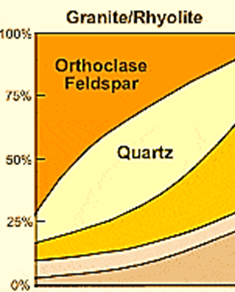THIS test can be saved and resumed later. Completion Question Completion Status: A Moving to another question will save this response. Question 2 Which piece of evidence listed below did Alfred Wegener NOT use to support his hypothesis of continental drifting (1 answer)? the shape of the continents fossil evidence rock types and structural features such as mountains the rate of plate motion. ancient climatic (paleoclimatic) evidence A Moving to another question will save this response. vt M A
Please help answer the question from each image.


Rhyolite
Rhyolite is an igneous rock of extrusive origin with a very high concentration of silica, It is typically pink or grey in colour with grains so thin that it is impossible to see without any magnifying glass. Rhyolite is composed of sanidine, quartz, plagioclase and with small concentrations of biotite as well as hornblende. Stranded gases also create cavitites in this rock. They also contain crystals, glassy material, or opal.
Often rhyolites are formed by granitic magma, which has partly cooled down in the sub-surface. When such magmas erupt, a two-grained rock may form. The vast crystals formed under the surface are actually termed phenocrysts, and the smaller crystals formed on the surface are termed ground masses.In the continental or continental margin volcanic outbreaks, the rhyolites typically develop when magma of granite reaches the surface. Oceanic rhyolite is hardly ever developed.

fig 1: This graph illustrates that usually, rhyolite consists of orthoclase, plagioclase, micas, quartz, and amphiboles
Answer: Rhyollite
Step by step
Solved in 2 steps with 1 images
